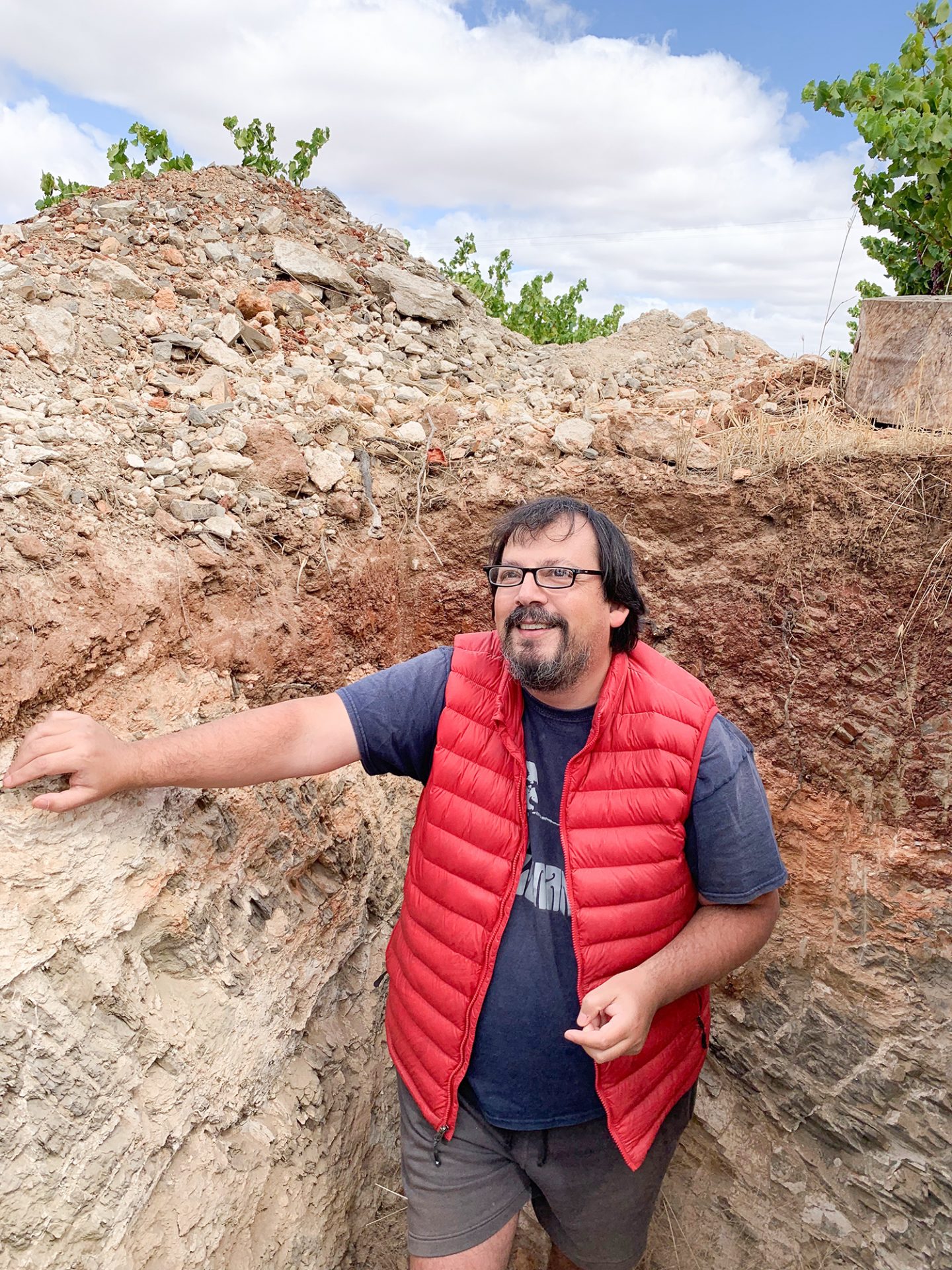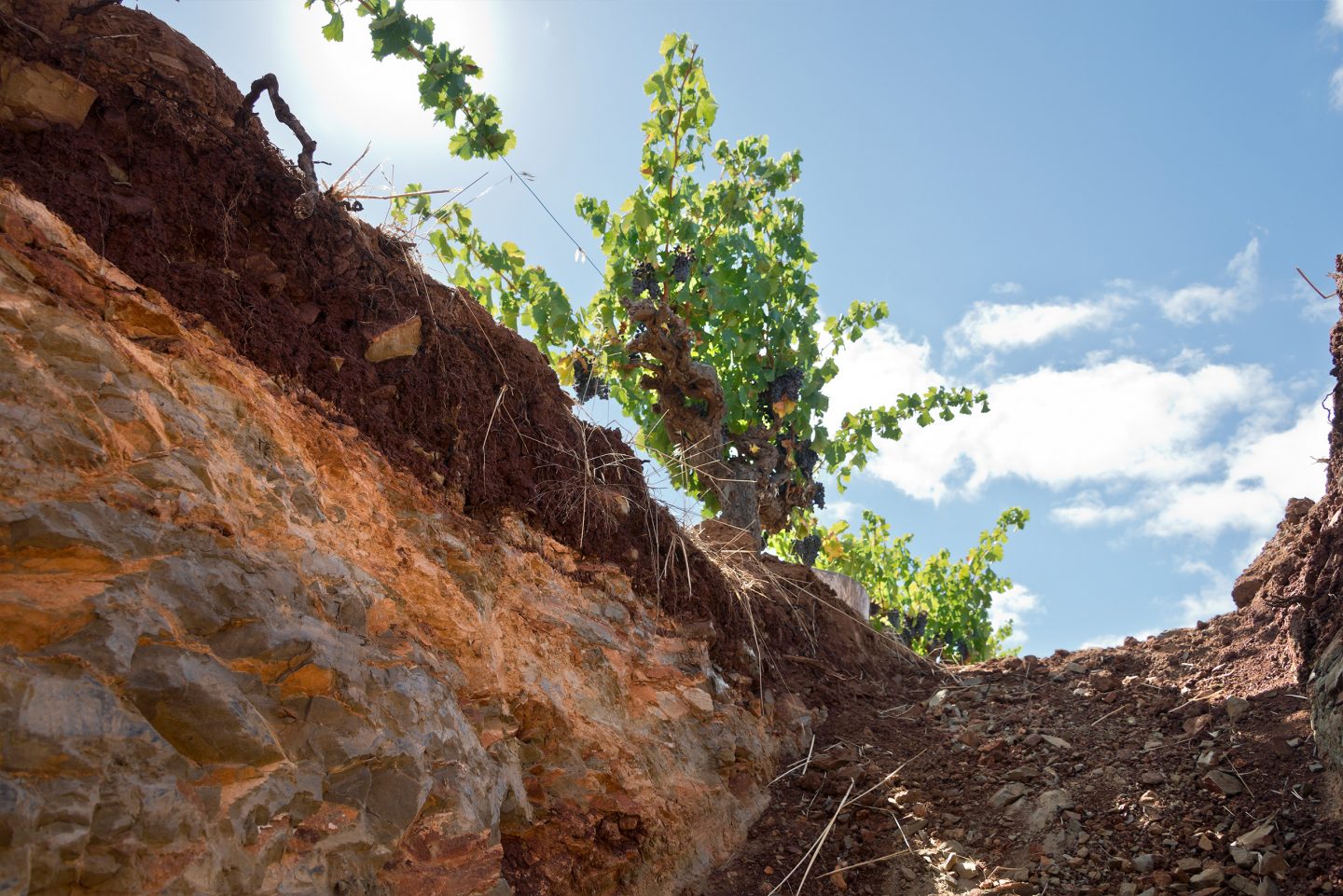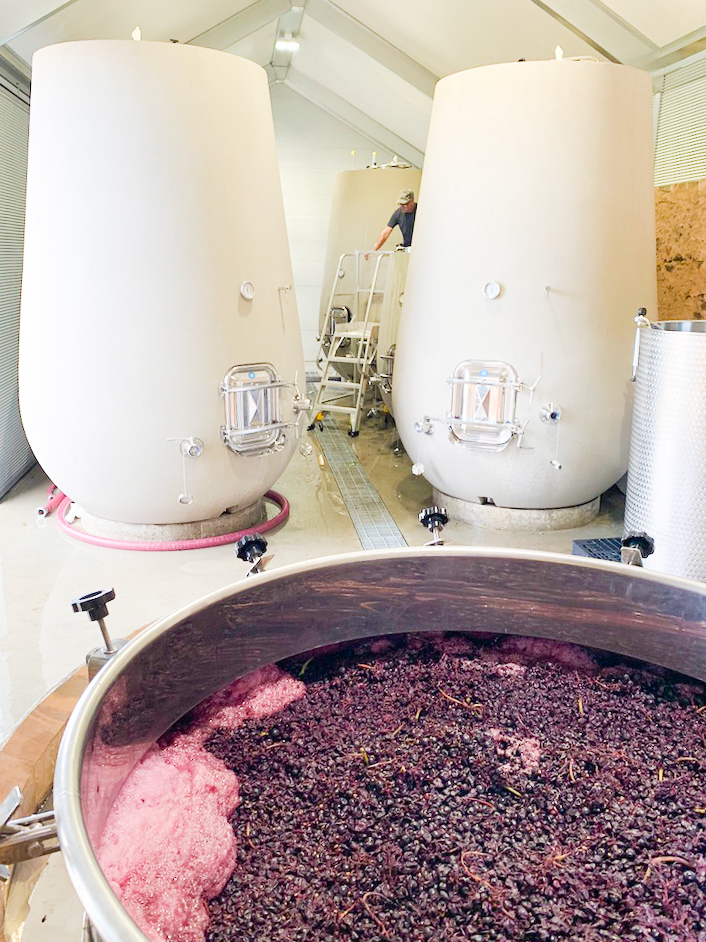
Amanda Pepe
Amanda is a journalist, editor and publisher who has dedicated much of her career to independent media in South Australia. She is currently editor and publisher of The Adelaide Review.

A Chilean terroir expert, trained in France, is combing through the soil at a Barossa vineyard, stone by stone, in the quest for Australia’s Grand Cru.
When The Adelaide Review visits Alkina in Greenock Creek, Pedro Parra is immersed in a tasting, his dark head bent over the glass in a pose that indicates intense concentration. Marshalling the wines is Amelia Nolan, formerly of Bibendum in the UK among other respected roles in the global wine community. An SA girl, Nolan is representing the Argentinian owner, Alejandro Bulgheroni, in his venture in the Barossa Valley. He purchased the derelict property with remnant vineyards and a few tumbledown stone buildings around an original homestead about five years ago after being convinced that the soil here could hold precious potential.
Outside the homestead kitchen where the tasting is underway, the main focus of Parra’s visit is clearly visible beneath the topsoil as work continues on turning the remaining stone walls of an outbuilding into a tasting room and cellar door. Nolan walks us around the site, pointing out the obvious changes in the geology where the excavator has been (and still is) hard at work. Stony schist mixes with iron and limestone with elements changing every metre.
“The project is driven by our quest to understand the scale of the variations in terroir on the property and how this informs our winemaking,” she explains. “Through Pedro’s mapping and soil pit studies we’ve arrived at a series of individual terroir polygons of about a third of a hectare, each producing 600 to 700 litres of wine, predominantly Parra is immersed in grenache, shiraz and mataro.
Parra is the key to the project. His story, related over an afternoon in his beguiling Chile-via-Paris accent, shows that his passion for soil has serious roots in science, study and many hours of work in some of the world’s most famous vineyards.
The former jazz saxophonist had the opportunity to attend school in France where he explains he was taught by a range of “crazy professors”. He received a grant from the French government when he was 27 (in 1997) to study for a Master’s – learning how to make interpretive maps in Montpellier. According to Parra, the experience changed his life.
“The French are very arrogant but very clever,” he says, somewhat cheekily as he is sitting next to his young understudy, Paul Krug, of the famous French champagne family, who is shadowing him around the world to learn the subtle arts of terroir wrangling.
“I was taught by a fantastic soil professor in the centre of agronomy in Europe. Ultimately I had the chance to do a PhD working with the same professor. I was his last ever student. He wanted to do something different. He wanted me to consider the scale issue – how closely you have to look at the soil.”

Parra spent four years researching in Paris, where he met terroir consultant Pierre Beuchet.
He also met a fellow Chilean studying in Burgundy so decided to visit him in 2002. The two became friends and Parra stayed with him frequently at the winery where he was based. There he learned that terroir is more than science.
“I learned how to taste minerality in wine,” he says. “I returned to Chile with scale in my mind and minerality on my palate.”
According to Parra, at that time all terroir consultants were French. He met Italian Alberto Antonini, a respected wine expert in Florence, and became a friend and consultant to him. “The more I worked, the more I learned and matured,” he recalls.
Parra worked out that he needed to be a specialist in wine, not in clay or silt, to understand what clients wanted.
“After 20 years doing this, I work with people who make wine I like to drink,” he says emphatically.
He also seeks challenges, which is how he ended up in Australia.
“I had the perception of Australian wine being too heavy,” he says. “So I thought – let’s interpret it a different way, take it on with an open mind.
“Music is like geology – some is heavy metal some is jazz.”
Parra is not rushing. It has been five years since the property was purchased and several vintages have started to reveal what might be possible with the vines.
“It takes time. We only have one chance per year to prove what we’re doing is working,” he says.
“Here we need to bring calm and winter to the rock – not add fire to fire. It’s not about ego. Winemakers need to be prepared to do nothing.”
To that end, there is no ‘star’ winemaker at work at Alkina. Nolan supervises everything, from vines to winemaking supported by a small local team who know the property and the Barossa like the back of their hands. “Here we don’t have a winemaker,” says Parra. “We have a team who understands the concept – to create wines that show the typicity of the terroir. [We want] wines with complexity, austerity.”

Parra and Nolan have just tasted the 2019 grenache and declare it to be “very good”.
“It is difficult to say it is an Australian wine,” says Parra, “but it is easy to say it is a schist wine. This is iron-dominated rock but in some places you get a ‘vomit’ of other geologies – and the results can be extraordinary.
“Only one per cent of Burgundy is Grand Cru. We are trying to find our one per cent. We’re trying to understand how to ‘cook’ with these ingredients. We are taking the focus away from the winemaker as ‘hero’. This is the key to unlocking the best, authentic ‘mineral’ wines we can.
“Burgundy is the aspiration, the concept.
“The aim is to have one polygon in any year that produces exceptional results. It should be possible to make great wines – even in a bad year.”
Parra gives as an example the 2002 Giacomo Conterno Barolo Monfortino – most of the wines for that year were no good, but if you’re making 30 wines you only need one to be great.
Asked if the ‘old world’ aspiration fits with the ‘new world’ wines Australia is known for, Parra responds firmly.
“This [Barossa] is the oldest terroir I have ever worked in. Burgundy is only 20 million years old. From the perspective of terroir, ‘old world’ and ‘new world’ makes no sense.”
As Nolan and Parra work their way through a tasting of straight grenache from four different terroir polygons, with experienced local taster David Ridge providing critique and context, their dedication to finding the influence of the terroir in the wine is obvious. They agree the harvest was left a little late the previous vintage and it could be the opposite has happened this year.
“It is important to reach a balance in every step,” Parra explains. “Grenache tends to be alcoholic – but it is possible to harvest a little too early as well. It is about finding the ‘window’ for harvest, then pare back, understand, then blend. Single vineyard if you want to express the individual terroir but a blend can be better, even though it is less reflective of the vintage.”
Nolan also points out that they receive ongoing and “invaluable” advice from winemaking consultant Alberto Antonini who oversees the winemaking for most of Bulgheroni’s wineries around the world.
“Alberto has encouraged us to work with unlined concrete vessels. We use tulip-shaped tanks from Nico Velo in Italy which are ideal because they do what oak does in terms of being living, breathing vessels, but they don’t impart flavours.
“We don’t want evident oak character in our wines because it masks the beauty and uniqueness of what we want to show: the expression of the terroir,” Nolan says.
She explains that, of the nine individual polygon wines made from the 2018 vintage, two grenache wines will be released as single polygon wines in mid 2020 along with a blend made from some of the other polygon components. The tasting room at Alkina will open in October this year.

Amanda is a journalist, editor and publisher who has dedicated much of her career to independent media in South Australia. She is currently editor and publisher of The Adelaide Review.